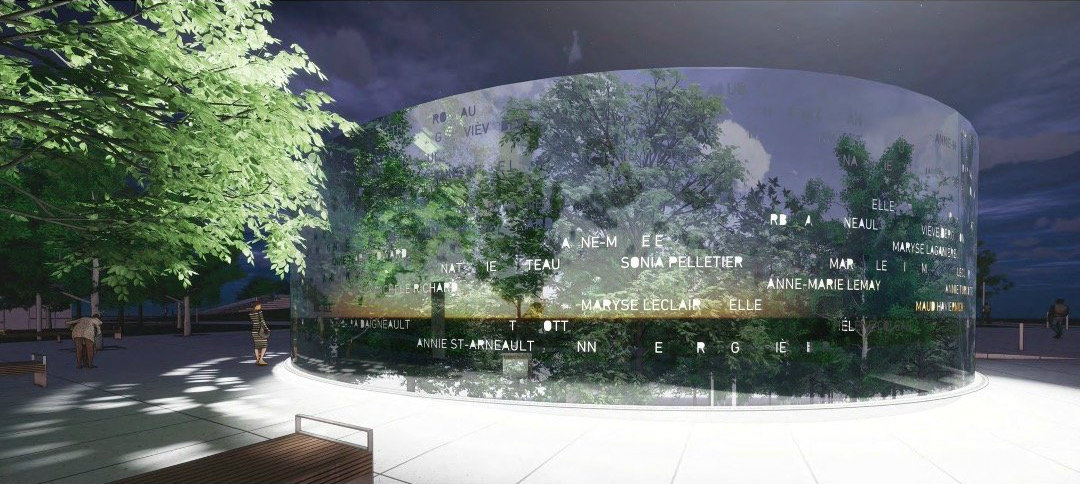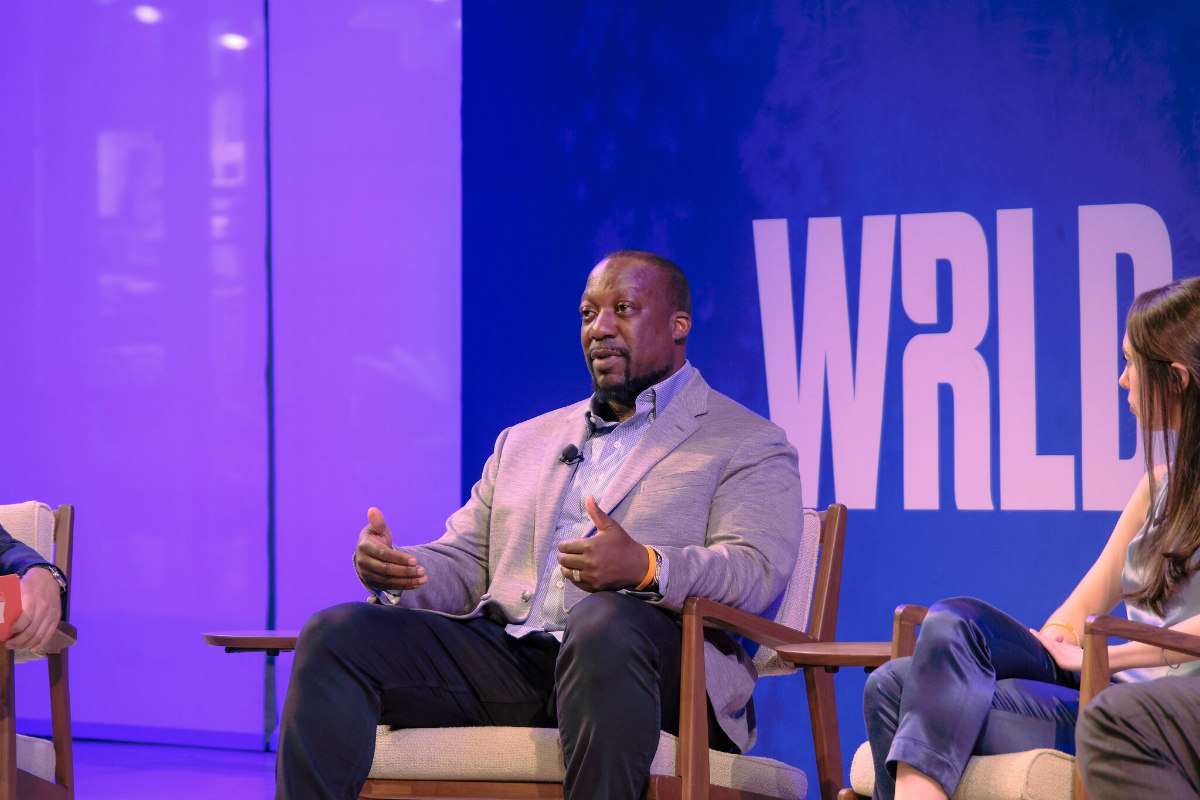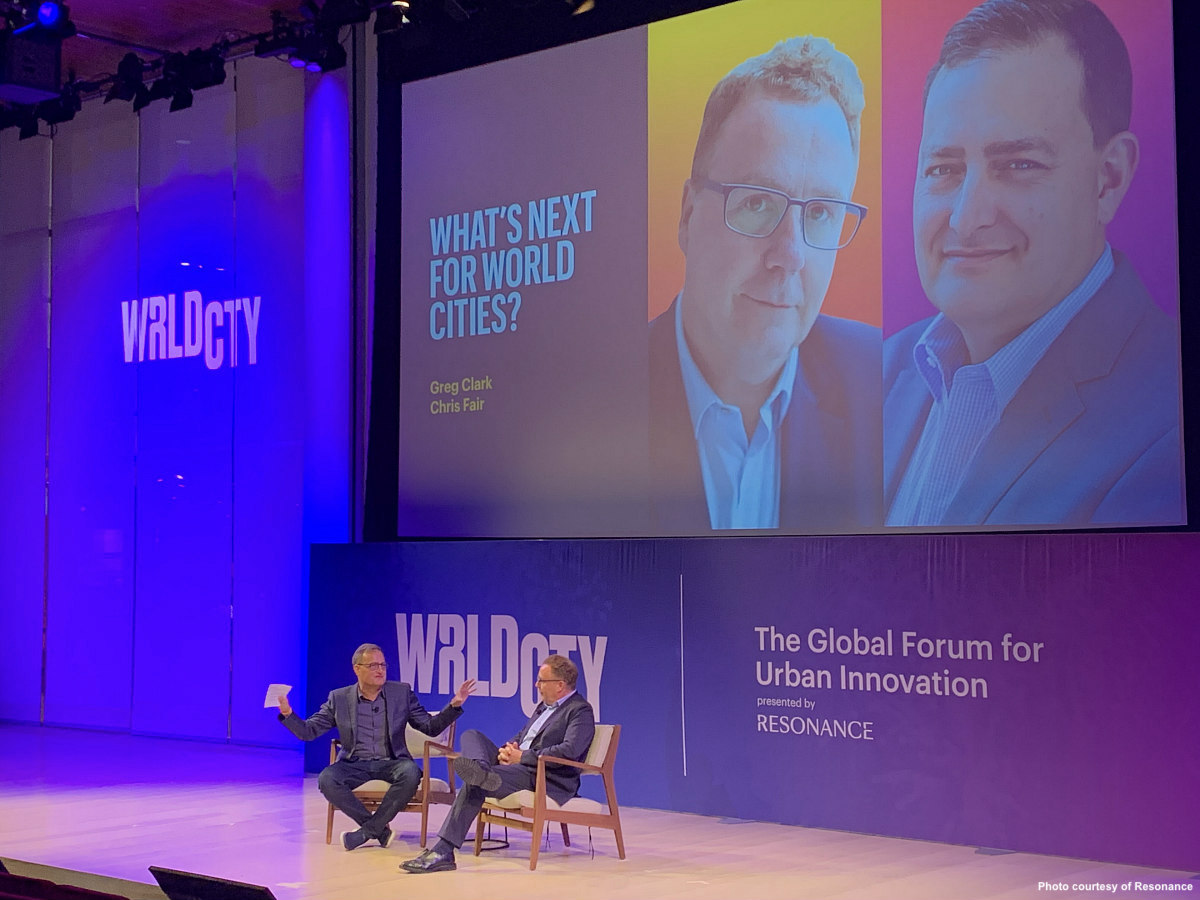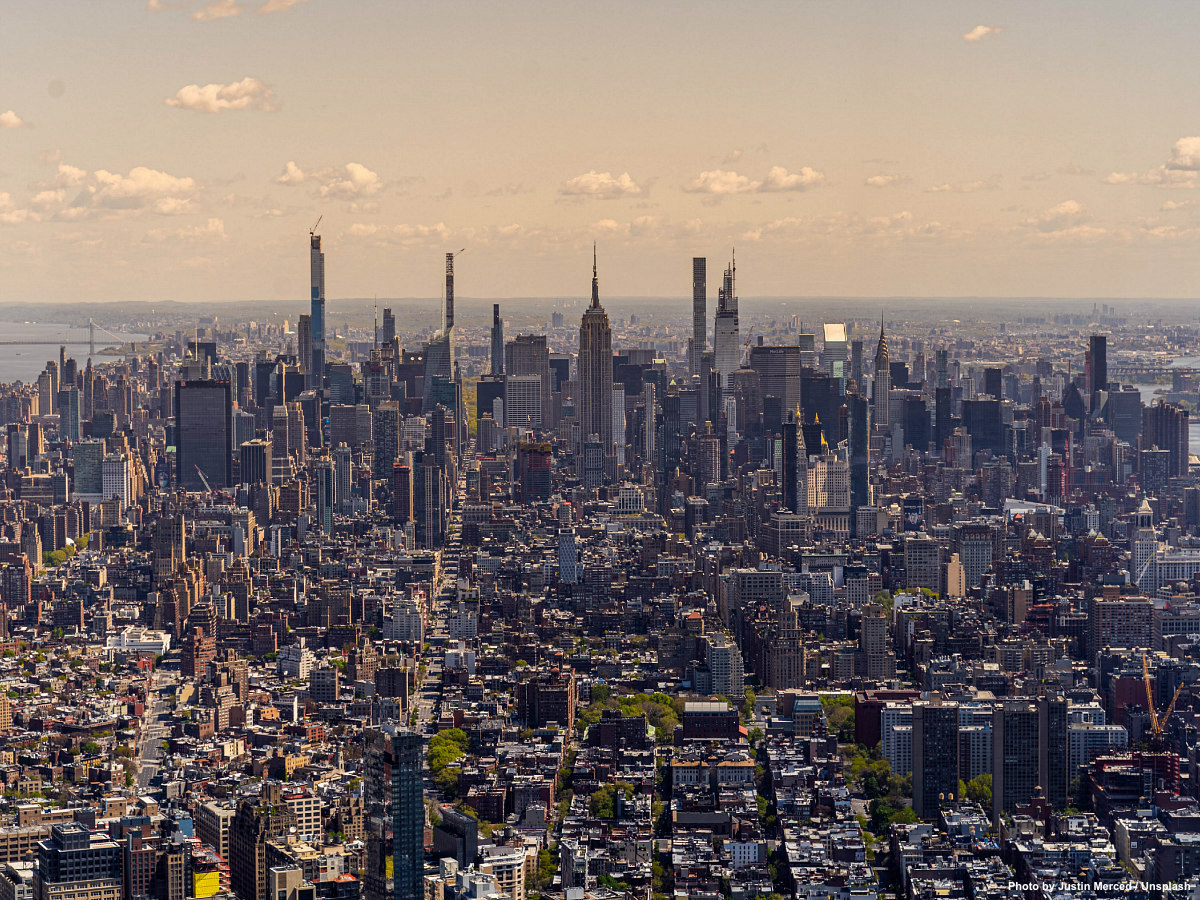Last week many urban practitioners have been watching WRLDCTY 2022, The Global Forum for Urban Innovation. In-person in New York at the Times Centre or streamed online. Those three days proved the urge to fix our cities, on various scores.
In New York, after two years of pandemic, the creation of small businesses has been significant. According to Andrew Kimball, president and CEO of The New York City Economic Development Corporation, they are focusing on the growth of innovation sectors such as life science versus bio tech, cyber-security and green-tech, which can retrofit buildings to bring down the carbon footprint of the city. Meanwhile, they are conceiving pathways for New Yorkers, in particular people of colour, to join these sectors. More people are back in employment, yet the unemployment rate is higher than the national rate and the inequities in those numbers are still extraordinary.
Equitable cities
I found equity one of the most present issues at the conference. During the talk Intentional Welcoming Lynn M. Ross and Katrina Johnston-Zimmerman pointed out the amount of inequities in the urban environment before the pandemic, noting the strange popular wish of going back to normal. A powerful shift in city budgets towards values in equity should be under way to create new spaces and committ to their maintenance. The latter is a profound equity issue.
Beyond the US, keep an eye on the amazing work done for La Place des Montréalaises and how the city of Montreal is recognizing twenty one women in public space. Their memory is embedded in the architecture that coalesce with art and engineering, explained Andrew King, Chief Design Officer, principal at Lemay, and the artist Angela Silver.
The project epitomizes the bravery of a feminist group that brought this project to the Montreal City Council. To put it bluntly, only now, Jeanne Mance, who co-founded the city of Montreal, is finally receiving recognition. But my favourite metaphor of the project concerns the “bronze ceiling” imposed by the statue of John Cabot at the square that has cared for an asymmetrical vision of the city for too long.

There are many indications of efforts to better balance gender equity into the surface of the city – like the installation of the first statue of real women at Central Park after 167 years of the park’s history – but there is still much to do.
In the same manner, The Aging City talk at the WRLDCTY reflected on age inequalities and a new global phenomenon called “double ageing”. The alarming combination of an ageing population and an old infrastructure, with the addition of extreme hot weather, will require a complete review of our built environment. A particular example is Hong Kong with many tall buildings and its ultra-high building density. In 2050, 40% of Hongkongers will be over 65, says Christine Loh, Chief Development Strategist, Institute for the Environment at The Hong Kong University of Science and Technology. Experts in architecture and urbanism have been crying out to work together across disciplines on this issue and to look at the building environment more holistically for the right solution. We will be listening out for new designs in housing like multi-generational buildings that accommodate the elderly and their family members.
The Dire Need to Disrupt Housing
The second topic, naturally, is affordable housing. And here voices from some of the most expensive cities – Bay Area, Chicago and Vancouver – discussed at the WRLDCTY how the market could be disrupted. Surely, agencies and city councils have acknowledged the “dire need” to create affordable housing but “they are really looking at the bottom line”, warns Andre Brumfield, principal and design director in Gensler’s Chicago office. Policies and public regulation have to change fundamentally, he claims, that allows flexibility for developers to explore new concepts.
So far there hasn’t been a really good product to reflect on the size of households becoming smaller – 30% of people in North America live alone – but at the same time the size of homes keeps going up. As an industry, says Oliver Lang, CEO and co-founder of Intelligent City, “we also haven’t found a way to build that scale [of product] at scale.” With adaptability in mind, developers’ portfolios will remain resilient because of those demographic changes. Buildings should at least last for the next 100 years.

I was glad to hear that the private sector has finally woken up to reinventing our cities. Neither a privatisation of public spaces nor for campaigns or product launches but a long term commitment to the urban environment where companies operate. Cities and companies could find an intersection to activate public spaces at a time when city budgets are shrinking. Once you’ve seen the space of Spotify in Los Angeles, it may forever change our experience of interacting with a corporate world truly committed to its consumers. Andy Lantz, partner and co-CEO of the design collective RIOS, in conversation with Jorick Beijer, Urbanist & Director at Blossity, explained how Spotify’s campus project invites the community to come in, facilitate encounters and amplify creativity and musical experimentation.
“Human Scale City” versus “The 15-minute City”
Overall Helle Søholt, Founding Partner and CEO of Gehl was thrilled to see how much thinking they have inspired around the world to advocate for life in public spaces. She spoke about reorienting the city’s design toward pedestrians, less dependence on cars and how to build socially sustainable cities. The Urban Belonging Project, which they have developed in Copenhagen, has collected amounts of data on how people experience the city differently, specially underrepresented minorities. It opens conversations about a city that works for everyone, all with the result of the “Eye-level City app to make new forms of citizen participation possible.”
Søholt emphasised the importance of designing cities focusing on neighbourhoods. How cities’ governments see it will be crucial to design the “Human Scale City,” that Gehl has long been advocating for. This found similarity to the recent movement “The 15-minute City.” On that, Prof Greg Clark, urbanist and author, would openly argue there is a risk that this concept of walkable and less cars neighbourhoods could imply that “you end with a rich people’s “15-minute City” and a poor people’s “15-minute City”. And I think they could be very different things.”

In a bigger picture, there are 1.4 billion cars in the world but they are only used 10% of the time. “So any one moment you have a billion roomers sitting there,” bemoans Thomas Heatherwick in his talk about a Human City at the WRLDCTY. He makes a point of telling us about the disruptions of the pandemic. We basically ended up having better seating and stereo in the car than at home. What seems really crazy. He hopes that a more human-centred design brings some cheer to boringness in the way we build cities devoid of character and meaning. Instead of an imposed dogma, his design studio incorporates emotion as a key function otherwise missing in the design of buildings, and keeps an eye on sustainability along with their work. I’d urge you to check the statistics, aviation is responsible for 2% of the greenhouse emissions worldwide. Construction, though, emits 15 times more.
Cities have significant clout on the world agenda. In all these aspects, urban progress poses a difficult question: Will national governments decide to empower cities to solve many of the global problems or “do we see the revolt of the cities against the nation states?” In tough times and with climate change ahead of us, “cooperative place leadership” is required, advises Prof Greg Clark, to manage cities. That means a more cross-sectoral approach with businesses, governments, institutions and citizens.
Two weeks ago we launched a new look of our website to better show all the local solutions that people are already implementing on the ground in cities around the world. Our timing with the WRLDCTY conference is not coincidental: the voices of these ‘doers’ should be also part of the conversation to fix cities. Their work offers glimpses into the city’s eco-system and also sparks new ways of thinking and progressive action in cities.
Back in New York, Chris Fair, founder of WRLDCTY and CEO of Resonance, gets the final word, prompting that we have to reinvent our cities, while a mass urbanisation of millions of people is happening at the same time. And he concludes “isn’t it a little bit like building the airplane while taking off?”

